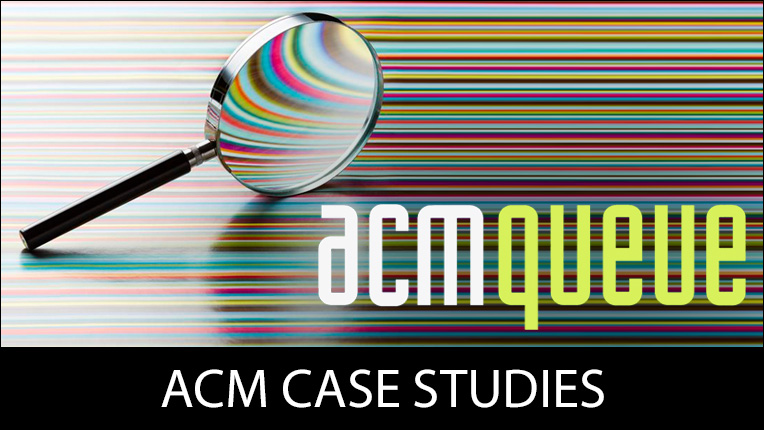ACM OPEN – Frequently Asked Questions
Who is eligible for the Open Access publishing option?
All corresponding authors from an institution participating in ACM OPEN will have their research articles published Open Access in ACM journals, conference proceedings and magazines, in perpetuity at the time of publication at no cost to the authors.
Will I continue to have access to the ACM articles I read?
Under the ACM OPEN agreement, faculty and students will continue to receive unlimited and unrestricted access to all articles in the ACM Digital Library, as according to ACM’s regular terms of use found at ACM Digital Library Terms of Use.
Why should an institution encourage its researchers to publish their work Open Access?
If you publish your paper Open Access, you can retain your rights as an author and your work becomes immediately accessible to the world to read for free. As a result, your research will be more widely disseminated and will have greater impact. The default authors' rights selection for authors affiliated with an institution participating in ACM OPEN is a Creative Commons CC-BY license, facilitating compliance with funder mandates.
How will my article be published Open Access?
Corresponding Authors will have the option to select the rights assignment option of their choice. ACM offers authors the option for all individual co-authors of the published article to retain the copyright to their article, or the option to provide ACM with a non-exclusive license to publish their article; and in the case of the authors’ copyright retention, to make their published article shareable via the use of a Creative Commons license, with CC-BY as the default option.
How does this new agreement affect me serving as a reviewer or editor for ACM journals?
Your ability to choose which journals to review and edit will not be affected
Can I continue to publish in the ACM journal, magazine, or proceeding of my choice once the new agreement is in effect?
Your ability to choose where to publish your research will not be affected. Authors may continue to publish in and support any ACM publication of their choice.
How is my institution’s ACM OPEN Tier classification determined?
Your institution’s ACM OPEN Tier is determined by the average number of its affiliated corresponding authored peer-reviewed research articles published over the last 3 full year period. Current ACM OPEN-participating institutions will have their ACM OPEN Tier for the next license period determined by using the annual average from the final 3 years of their current ACM OPEN license period.
Newly participating institutions will have their tier fixed on April 1 of each year based on the publication data from the last 3 full calendar years. For example, as of April 1, 2023, all new ACM OPEN-participating institutions will be tiered according to their average publication output from the January 1, 2020 to December 31, 2022 period.
Why might my institution’s reported publication data change over time if it is for the same reported period of time?
As the scholarly publishing industry transitions to sustainable models for Open Access publication, having accurate and reliable publication data has become more important than ever before for societies and publishers to ensure that articles eligible for Open Access publication are identified, routed through the appropriate publication workflows, and accurately reported on to those paying for Open Access publication (i.e. - institutions, authors, funders, other sources, etc.).
In the ACM OPEN model, an article’s eligibility to participate in the program is dependent on the institutional affiliation of the corresponding author, so it is critical to accurately identify both the corresponding author and their institutional affiliation. Historically, since author names can be ambiguous and authors do not always list their affiliations the same way in their articles over time, list multiple affiliations related to a single published Work, or use Gmail or other generic domain names for their contact information, accurate author and institutional name normalization has been a long-standing issue in the publishing community and is a challenge nearly all publishers are working on both separately and together. Several related industry efforts to solve this problem are ORCID and ROR and ACM is participating in both of these efforts.
In addition to these industry efforts which will take time to fully implement and realize the benefits of, ACM has recently started to implement a new automated affiliation hierarchy system and incorporate manual checks into its production workflows and reporting systems for ACM published articles and ACM OPEN publication data as part of an overall effort to provide more accurate reporting. Nevertheless, ensuring the complete accuracy of publication data underpinning the tiering and pricing for the ACM OPEN program should be treated as a goal that will take years to achieve.
For this reason, it is possible that over time our new automated systems and manual checks will identify articles that were previously excluded from the reported data or that articles reported as belonging to an ACM OPEN institution may either not be appropriate for inclusion in ACM OPEN or else misattributed to that institution. As a result, the article data previously sent to an institution may change over time as these affiliation processes improve. Based on a detailed review of the data and new Quality Assurance procedures being implemented for ACM OPEN and the ACM Digital Library, ACM is confident that the data is overwhelmingly accurate (over 90%) and that our focus is on the edge cases to ensure that the community can trust the data that appears both in the ACM Digital Library and provided to our ACM OPEN customers. The success of the ACM OPEN model will depend on a variety of factors, including the accuracy of our data, and so we believe that our ACM OPEN institutional partners have a strong role to play with these efforts by periodically checking the article data it receives from ACM and notifying us if anything appears incorrect or potentially missing. Where errors or omissions are identified, ACM will make the appropriate changes to ensure the integrity of ACM OPEN and the relationship between ACM and our institutional and consortial partners. The complete and accurate affiliation of research articles is a long-term goal for the publishing industry as a whole, and ACM appreciates the partnership of the academic community in this effort.
What article types are eligible for Open Access publication in the ACM OPEN license model?
All fully peer-reviewed research articles newly published in ACM’s magazines, conference proceedings, and journals are eligible.
What sort of publication license is available to authors under the ACM OPEN license model?
The default choice for the corresponding author is to grant ACM the non-exclusive permission to publish and to use a CC-BY license; however, the author may also choose to grant ACM an exclusive license to publish. If granting ACM the non-exclusive permission to publish, the author may also choose other CC licenses.
Once fully executed, may the ACM OPEN license agreement, including financial information be published?
Yes, however we ask for the actual signatures in the license to be redacted for purposes of identity protection.
How can I learn more about the ACM OPEN model?
Please contact [email protected] for more information.
ACM Case Studies
Written by leading domain experts for software engineers, ACM Case Studies provide an in-depth look at how software teams overcome specific challenges by implementing new technologies, adopting new practices, or a combination of both. Often through first-hand accounts, these pieces explore what the challenges were, the tools and techniques that were used to combat them, and the solution that was achieved.

Lifelong Learning
ACM offers lifelong learning resources including online books and courses from Skillsoft, TechTalks on the hottest topics in computing and IT, and more.

